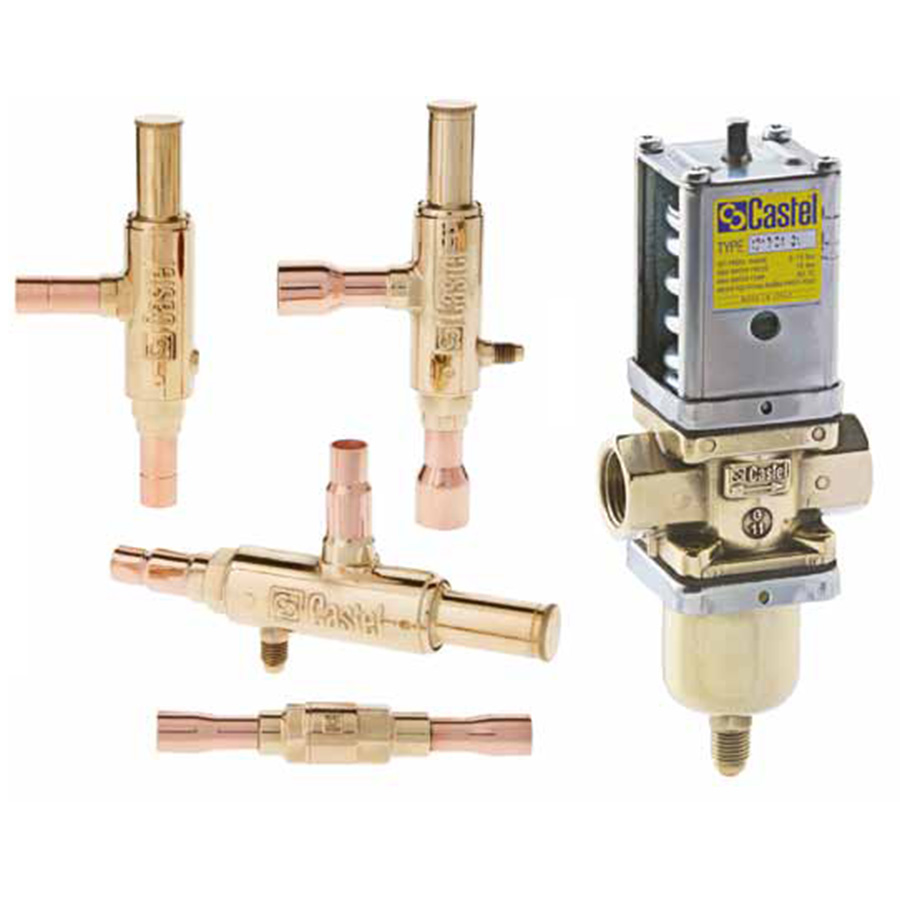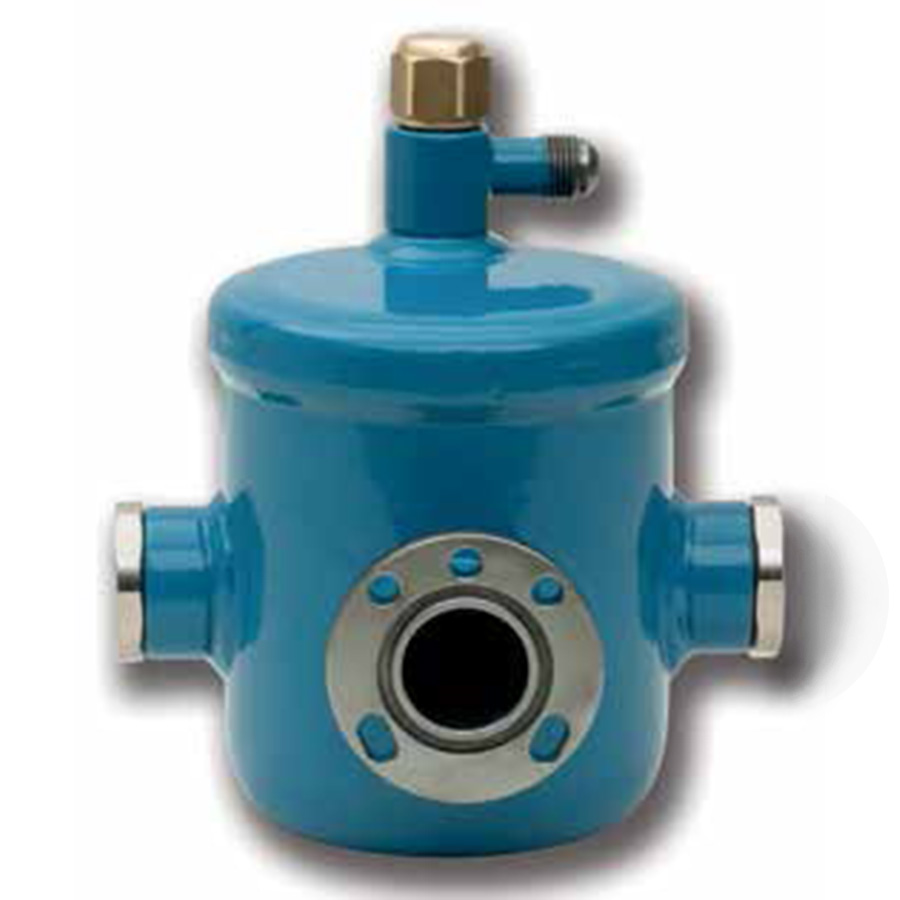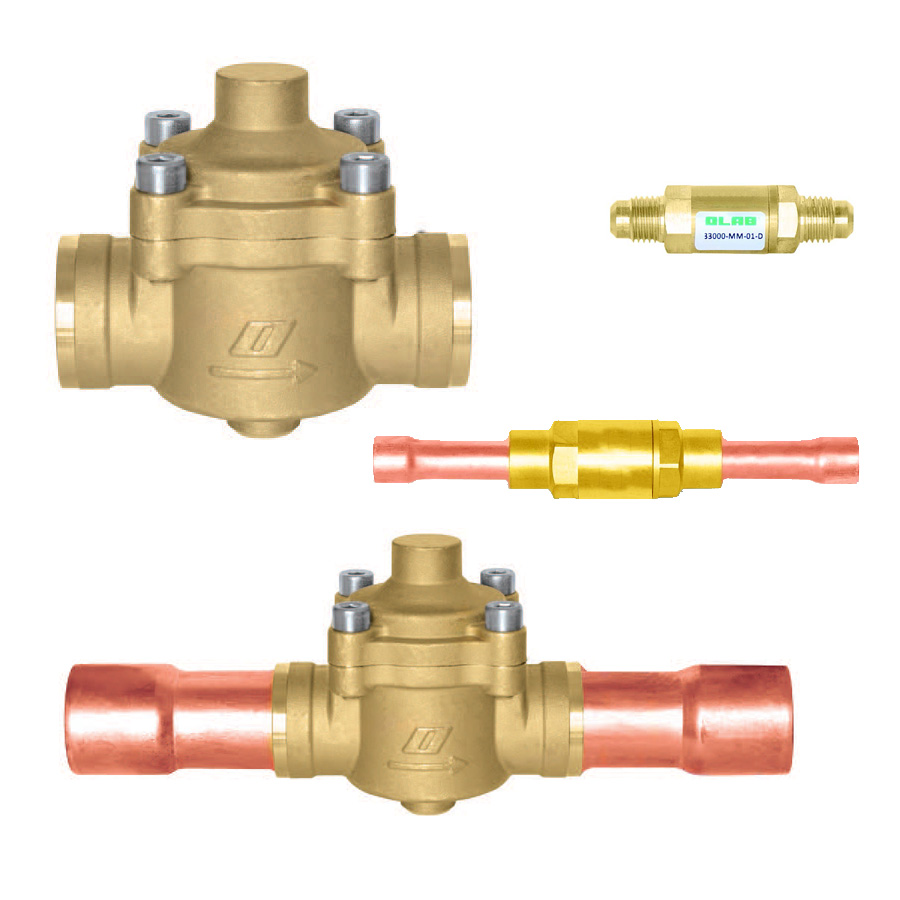Menu
Pressure Regulator
Pressure Regulators are designed to control the system based on pressure variance within a range. Based on different application various pressure regulators are available.
- Condensing Pressure Regulating Water Valve / Water Regulating Valve
The water regulating valve, employed with condenser fed with either main or well water, keeps the condensation pressure constant at the previously set value by adjusting the water flow so as to ensure a balanced heat exchange under all conditions. At plant start-up, this adjustment is designed to allow
the thermostatic valve rapidly reaches normal operating conditions and subsequently, during the operations, to avoid excessive pressure increases or decreases under different flow conditions. An excessive rise of high pressure affects the refrigerating capacity of the system. On the other side, pressure lowering leads to insufficient refrigerant feeding of the evaporator with consequent increased gas over heating and parallel reduction of gas pressure at the compressor suction.
- Capacity Regulator
On air conditioning systems it is desirable to limit the minimum evaporating pressure during periods of low load to prevent coil icing. On refrigerating systems it is desirable to limit the minimum evaporating pressure during periods of low load to avoid operating the compressor at a lower suction pressure than it was designed to operate. Capacity regulators are a practical and economical solution to these problems while they permit to bypass a portion of the hot discharge gas directly to the low side maintaining a desired minimum evaporating pressure regardless of the decrease in evaporator load.
- Crankcase Pressure Regulator
The crankcase pressure regulator is a common accessory added to many low-temperature refrigeration applications. It is designed to prevent the compressor’s motor from overloading when its crankcase pressure rises above its designed working pressure. On many low-temperature applications, this can occur during or after a defrost cycle, or after a long shutdown period.
- Evaporating Pressure Regulator
The evaporating pressure regulator is an accessory designed to maintain a constant evaporating pressure
and thereby a constant surface temperature on the evaporator under varying evaporator load. This valve
prevents too low evaporating pressure and therefore protects against freezing in water chiller or against coil icing in air evaporators. The regulators are also used to differentiate the evaporating pressures in two or more evaporators in systems with one compressor.
- Condensing Pressure Regulator
The design of air conditioning and refrigerating system utilizing air cooled condensing units that will be subject to wide range of ambient temperature it is very important to foresee an accurate control of condenser capacity. As the condensing unit, properly sized, will operate satisfactorily during high ambient temperature, it follows that the capacity control needs at low ambient temperature. Good condensing pressure control during low ambient temperature avoids problems during running cycle of system and helps the start-up. Particularly this control maintain a minimum pressure differential across the orifice of the thermostatic expansion valve so that the expansion valve’s capacity can match the evaporator load.
- Liquid Receiver Pressure Regulator
The liquid receiver pressure regulator is used coupled with the condensing pressure regulator, alternatively to differential valve. These two valves form a regulating system that maintain constant condensing and receiver pressure in plant with heat recover and air and water condensation. The condensing pressure regulator restricts the liquid flow from the condenser to the receiver, thus reducing the active condenser surface and raising the condensing pressure. The liquid receiver pressure regulator by-passes hot gas from the compressor discharge to the receiver thus raising liquid pressure in the receiver.
Categories Controls, Refrigeration Line Controls
Only logged in customers who have purchased this product may leave a review.




Reviews
There are no reviews yet.